If there is life on Mars it could be playing games, according to conspiracy theorists who claim to have spotted a small marble in the Martian soil.
Captured by the Mars Rover Curiosity,an image taken on 1 January shows a small dark sphere looking out of place lying among the familiar red dust and craggy rocks.
Some suggest it is a marble, but a much more likely explanation is that it is an example of a Martian spherule, thought to be formed when volcanoes spray molten rock into air.
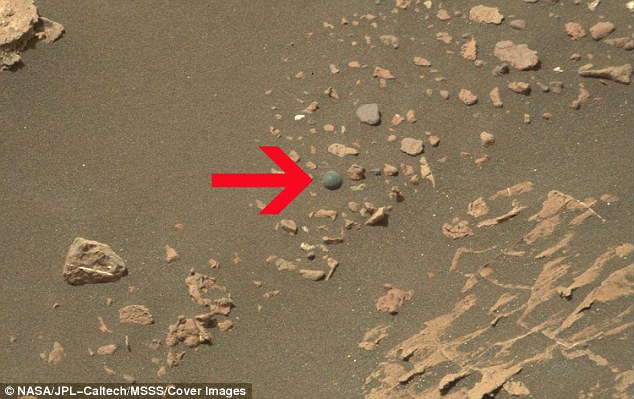
Captured by the Mars Rover Curiosity,an image taken on 1 January (pictured) shows a small dark sphere looking out of place lying among the familiar red dust and craggy rocks
A black and white picture taken on 20 December 2016 shows the same ball in the same place, although Martian dust appears to have covered surrounding rocks since then.
The pictures were taken by Nasa’s Curiosity rover – which has been examining the surface of Mars since it landed in 2011 – using its right mast camera.
The images are most likely to show an example of a Martian spherule.
Also known as blueberries because of a blue hue given to the objects in false-colour images, Martian spherules were discovered by the Mars rover Opportunity in 2004.
One theory is the spheres may have formed when molten rock was sprayed into the air by a volcano or a meteor impact.
Another theory suggests they formed when groundwater flowed through porous rocks creating chemical reactions that cause iron minerals to precipitate into small, layered balls.
‘A number of straightforward geological processes can yield round shapes,’ says Dr Hap McSween, an Opportunity science team member from the University of Tennessee, Knoxville.
The marble is just the latest in a series of ‘discoveries’ of strange objects on Mars by conspiracy theorists.
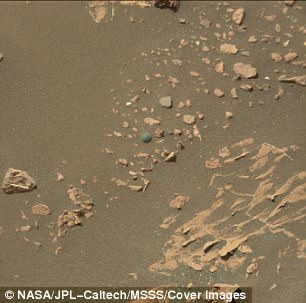
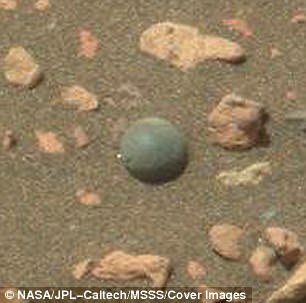
The pictures are most likely to show an example of a Martian spherule. One theory is that the spheres may have formed when molten rock was sprayed into the air by a volcano or a meteor impact
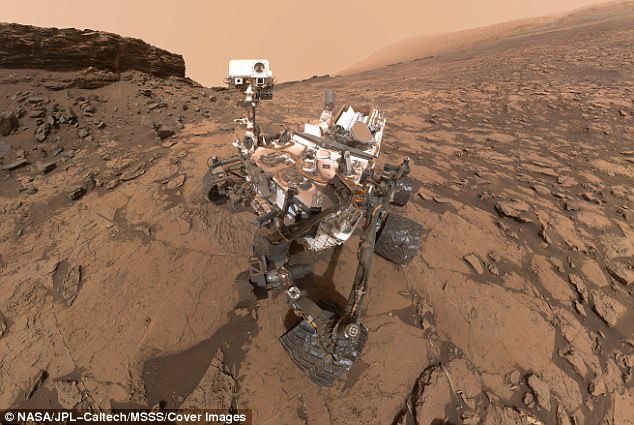
The pictures were taken by Curiosity’s rover (artist’s impression pictured), which has been examining the surface of Mars since it landed in 2011

A black and white picture taken on 20 December 2016 shows the same ball in the same place, although Martian dust appears to have covered surrounding rocks since then
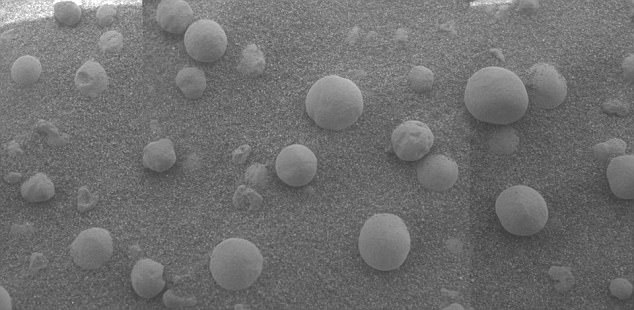
This mosaic image shows some Martian spherules partly embedded, spread over the (smaller) soil grains. Another theory suggests they formed when groundwater flowed through porous rocks creating chemical reactions that cause iron minerals to precipitate into layered balls
Last month, alien enthusiasts believe they have found an exciting clue in the ongoing search for life on Mars – a spoon.
Footage from a NASA rover appeared to show the large utensil on the Red Planet’s sand-like surface.
It was the second ‘spoon’ to be found on Mars in recent years, with believers claiming it could be proof of developed life on the planet.
Other objects such as rings and gloves have also been found.
The video was first noticed properly when it was uploaded to YouTube by the UFO Hunter account, with the description: ‘There is a giant spoon on Mars! This thing is amazing! Probably left over from a lost civilization’
And some users were amazed at the discovery – one said: ‘Wow, it could’nt possibly be natural, could it.’
Another added: ‘Considering this is the second spoon they have found, this could be a sign of intelligent life.’
However, others were more skeptical, suggesting it could be an optical illusion.
One user commented: ‘We see what we want to see. Some folk see the face of Jesus in tea-leaves, others see the man in the moon.’








